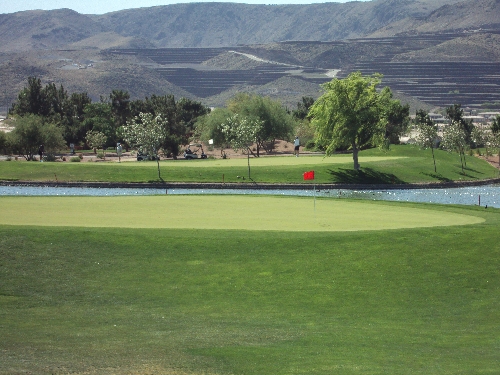Executive courses offer great option for summer play

First things first: Some people just don’t like executive-length courses. For them, golf is about long par 5s, midmorning tee times and being gone until late afternoon, despite the fact that they reached the 19th hole by 2 o’clock (not to undermine anyone’s honey-do avoidance scheme). While understandable that it doesn’t really feel like a round of golf unless the big dog has been off the leash a few times, there is a time and a place for everything, and executive-length courses are no exception.
For those who haven’t experienced short-form golf, the term “executive” generally refers to courses that are 18 holes but play to only par 60 or so, consisting predominantly of par 3s with a smattering of shortish par 4s tossed in for variety. If championship golf and pitch-and-putt had a love child, it would be an executive course. The par 3s are legitimate, although they rarely exceed 200 yards in length. The 4-pars? Well, anything more than 350 yards is considered a stretch.
So why play an executive course? For inexperienced players, it offers an opportunity to hone their skills in a less intimating environment and perhaps claim to have broken 90 (although they seldom remember to mention that par was 60). For those who still enjoy the game but can’t rip a drive 250 yards anymore, it remains a great challenge. For those with specific weaknesses, this hacker included, it provides ample target practice for midiron approaches. And for those who want to scratch the itch without planning the entire day around it, a round can often be completed in less than three hours.
In Southern Nevada, there are a small handful of executive-length courses, including Eagle Crest in Sun City Summerlin, Durango Hills and, perhaps the best of the bunch, Desert Willow Golf Course in Henderson. Weighing in at only 3,811 yards, Desert Willow rarely demands a driver — although it’s still fun to blast one out there on some of the par 4s. However, what it lacks in distance, this surprisingly stout track makes up for with subtle greens and tricky greenside contouring.
Desert Willow opens with a par 4 that measures only 306 yards. The fairway is relatively open, but any miss right will prompt an Easter egg hunt on the driving range. A bunker guards the front left side of the green, but the putting surface otherwise invites the short approach.
At only 116 yards, the par 3 fifth hole really shouldn’t present a problem, but it plays downhill, so an overly aggressive tee shot to a back pin can find the water behind the green. There are only a few places one can really get in trouble on this course; this is one of them. The putting surfaces are remarkably smooth despite summer conditions, and the slope is less obvious than on many of the valley’s other courses, where putts invariably break toward the Strip.
After a vexing par 3 played to an obfuscated green surrounded by deep grass bunkers, the front side closes with Desert Willow’s most difficult hole, a 349-yard par 4 that features more sand and water than Fiji. From the tee, avoiding the large bunker along the left side is critical.
Additionally, water deep in the landing zone is in play for longer hitters who pull driver. After finding the narrow fairway, all that remains is an approach that must squeeze between water, sand and a deep grass bunker. From anything less than ideal position, aim short left for a good look at an up-and-down.
The back nine opens with arguably Desert Willow’s most entertaining hole. A drivable par 4 that plays only 317 yards downhill into a valley, No. 10 begs players to let the big dog eat. Even for those who can’t drive the green, there is little trouble to be found near the funneled fairway. The putting surface slopes from the back, making pitch approaches even easier. On a course full of birdie chances, this is the plum, although it isn’t ranked as such.
At 209 yards, No. 14 is the longest of the par 3s and the most difficult of the lot. Although there are no greenside bunkers, the contouring of the grass that fronts the putting surface makes the target difficult to define. This hole requires a solid shot with a fairway metal for most players, followed by a putt or two on surprisingly quick greens.
While Desert Willow’s closing hole may not have the honor of being its toughest, this great little par 4 is by far the most intimidating. From the tee, the fairway extends over a gentle rise that obscures the green. Unbeknownst to those who don’t check out the card, however, solid ground ends abruptly about 225 yards from the tee box. Those who club down from the tee are often chagrined to discover that the same lake fronts the green, which is shoehorned in between the water and a large bunker. The only bailout area is long and left, although the chip from that knobby hill can be a bit stressful.
Understanding that executive golf isn’t for everyone, it is for those who want to improve their game and not spend five hours doing it. Desert Willow Golf Course is located at 2020 W. Horizon Ridge Parkway in Henderson. For more information or to reserve a tee time, visit www.desertwillowlasvegas.com or call 263-4653.












